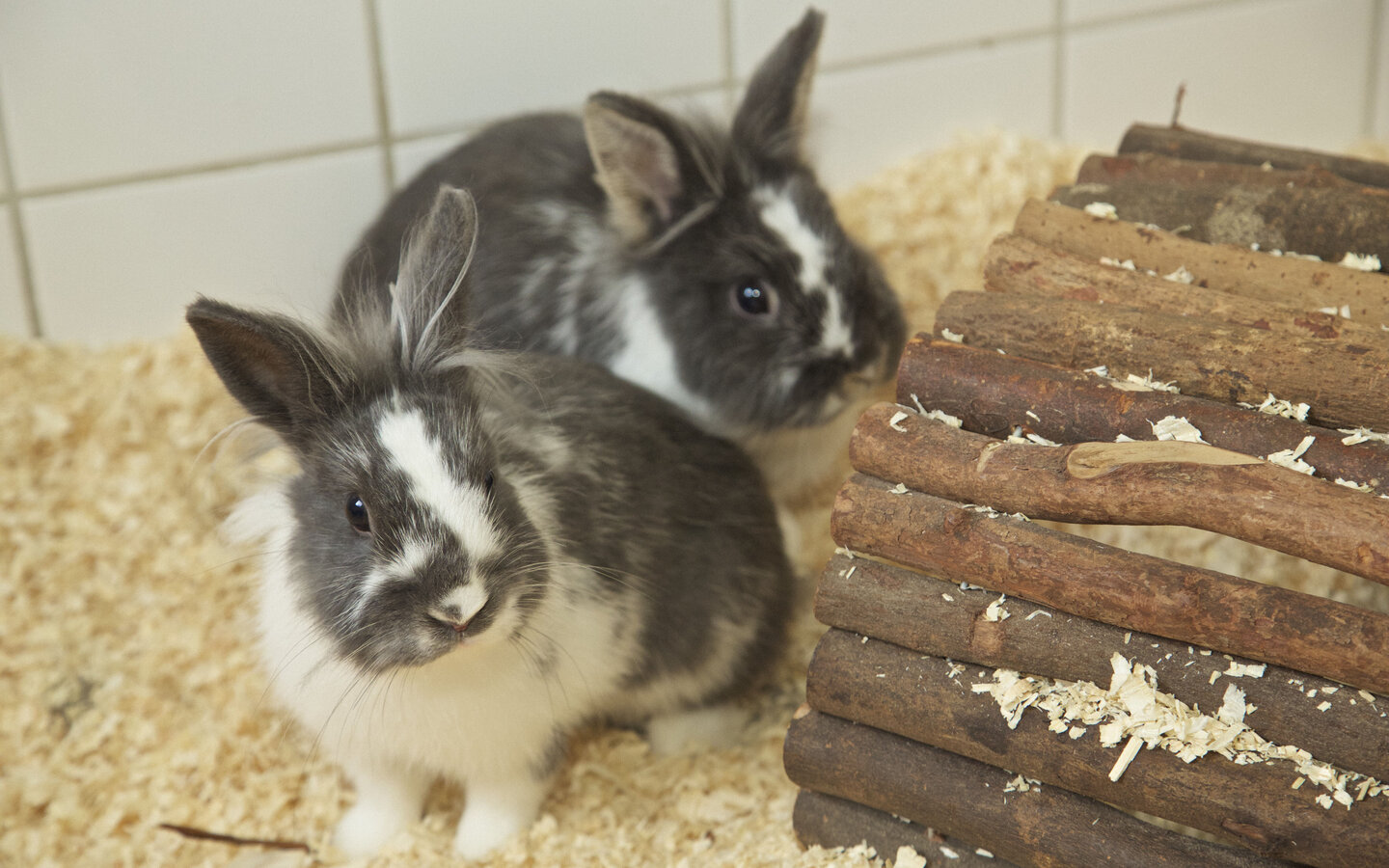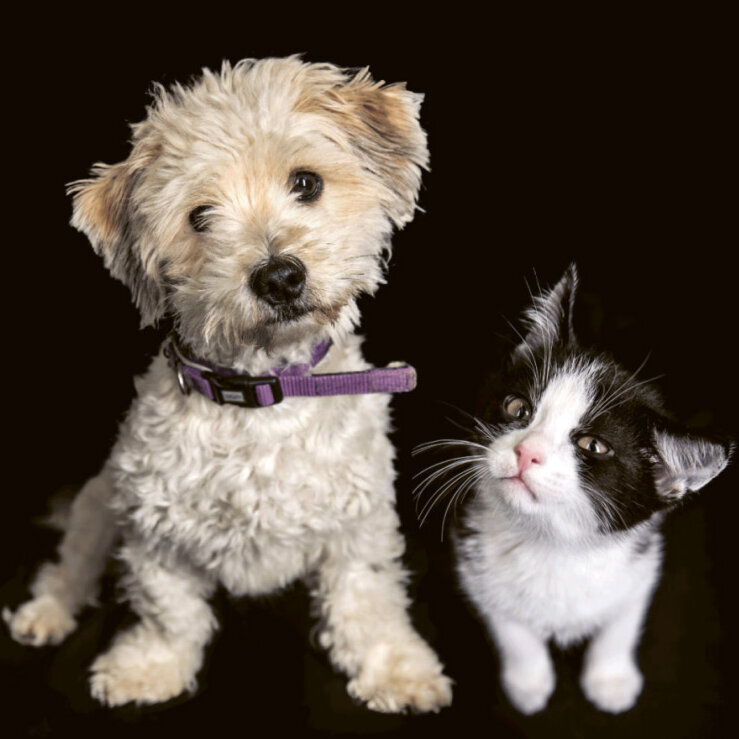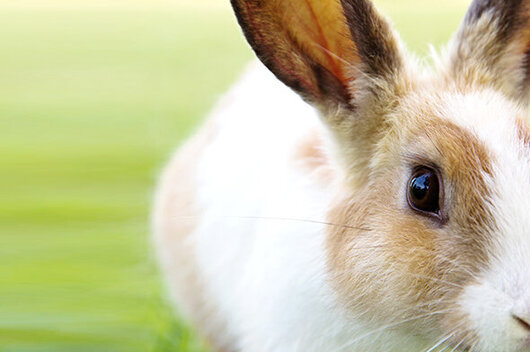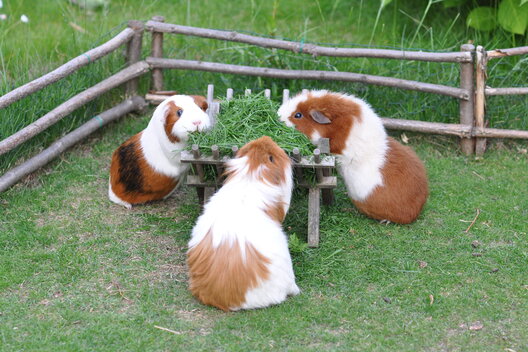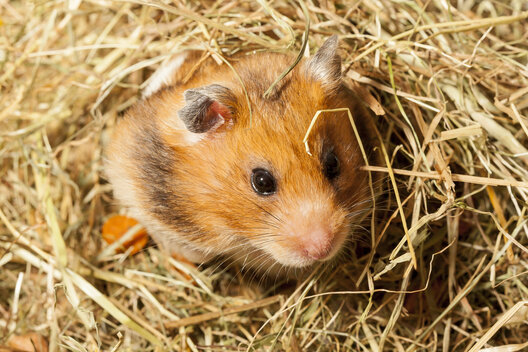Tips and informationKeeping rabbits outside all year round
Rabbits can be kept outdoors all year round if they are housed appropriately and well cared for. Keeping rabbits outdoors all year round is animal-friendly, but it is demanding and costly. Under certain conditions, rabbits can cope with the local climatic conditions. However, under no circumstances should they be kept individually or in a conventional cage on the balcony.
Reacclimatization
Spring is the right time to accustom rabbits to being kept outside. It is advisable to acclimatize them gradually. To avoid digestive problems caused by an abrupt change of food, the animals should first be accustomed to fresh food (meadow grass) indoors - if this is not already part of their daily feeding repertoire. In the next step, the rabbits can be put outside for hours at a time, but initially only on the dry meadow - not directly after the rain in the wet grass. The animals can only be left outside overnight when there is no more frost on the ground (usually from mid-May).
If the rabbits are accustomed to being kept outside in spring, they can stay outside all year round from then on. Later acclimatization (e.g. in summer) is not ideal; it is too late for acclimatization from September onwards. In this case, the animals should remain indoors for six months longer. Young animals, mothers and sick animals are generally better kept indoors all year round.
Enclosure size
The more animals there are, the more space they need. It is best to keep a group of three to five animals in a large enclosure in the garden. This should be at least six square meters in size . The enclosure must have a firmly anchored, predator-proof fence. It must be both escape-proof and burglar-proof. Rabbits or intruders (martens, foxes, dogs, cats) must not be able to dig under the fencing. It is also important to ensure that predators cannot fly in from above. For this purpose, the ground must be secured 50-60 cm deep with wire mesh that is connected to the enclosure fence at the edge.
StructuringThe habitat must have a safe and varied structure:
A feeding place in the outdoor enclosure should be covered and have a slightly raised wooden floor (dirt and moisture-proof). Fresh hay and green food is offered here daily. Water must be offered in a frost-proof place.
The shelter must be weatherproof and spacious. It must have a raised level and one or more sleeping chambers underneath. The entrance should be slightly offset and protected so that no draughts can enter the hut. There must be enough space for each animal to retreat. However, the hut should not be too large either, so that too much heat is not lost in winter. A hollow roof over the flat roof prevents heat build-up in summer. The accommodation must be dry, draught-proof, well insulated and predator-proof. To achieve this, the hutch should be made of wood at least 15 mm thick or lined with polystyrene or another insulating material.
The rabbits must have access to the hutch at all times. The caretaker must have access without panicking the animals (e.g. via a hinged roof). On colder days, the hut should be thickly littered and there should also be straw and hay for thermal protection. A feeding place should be provided in the hut so that the animals do not have to go outside to eat in cold temperatures.
In addition to the shelter, the animals should be offered numerous hiding places and obstacles. The enclosure should have a varied design and offer plenty of activities. For example, fine sand for digging and some large clay tubes can be placed in a part of the enclosure that is always dry. Stones, tree trunks, raised levels and pieces of wood serve as lookouts for the animals; roots and overhanging branches as hiding places. Various wooden elements are gnawed on and boxes filled with leaves are rummaged through. Small trees or bushes provide shade and gnawing material.
The floor of the enclosure should be as dry as possible - the floor bedding can be varied (gravel, beech shavings, straw, playbox sand, softwood granules, moss, stone slabs, etc.), as different floor structures have a stimulating effect and encourage the claws to wear down.
Additional measures in winter
Rabbits tolerate cold and snow better than blazing sun and high temperatures. However, additional measures must be taken in winter: The sleeping areas should be insulated with newspaper and plenty of hay and always kept dry. Icy water in the feeders must be replaced regularly. From the fall onwards, the animals should be given plenty of energy-rich food to build up fat reserves and lots of vitamin C-rich greens. Even in very cold temperatures, rabbits should not be brought indoors at short notice. The sudden change in temperature means more stress for the animals than the cold outside. It is better to ensure that the animals have an insulated, protected environment in their sleeping house. If in doubt, the temperature can be checked with a thermometer. The temperature in the shelter should not fall below 0°C. On very cold nights, a heating pad placed underneath can help.
Outdoor enclosure on the balcony
Especially in large cities, there are often no gardens available for keeping animals outside. Instead, owners want to keep their animals at least on the balcony. This is possible, but all the points mentioned above must be taken into account(shelter, structure, space available). A commercially available rabbit cage is by no means sufficient for keeping rabbits outdoors on the balcony! The balcony must also be adequately secured. The animals must not be able to fall down and there must be no way for other animals to get onto the balcony. Please note: A dwarf rabbit can easily jump 70 cm from a standing position.
Further information
„Die Haltung von Zwergkaninchen“, Broschüre des Deutschen Tierschutzbundes
Morgenegg, Ruth: Artgerechte Haltung, ein Grundrecht auch für (Zwerg-) Kaninchen, Verlag: tb-Verlag, 3.Aufl. 2003., ISBN: 3952266116
Wegler, Monika: Kaninchen im Außengehege, Verlag: GU, 3. Auflage 2008, ISBN: 978-3833808661

